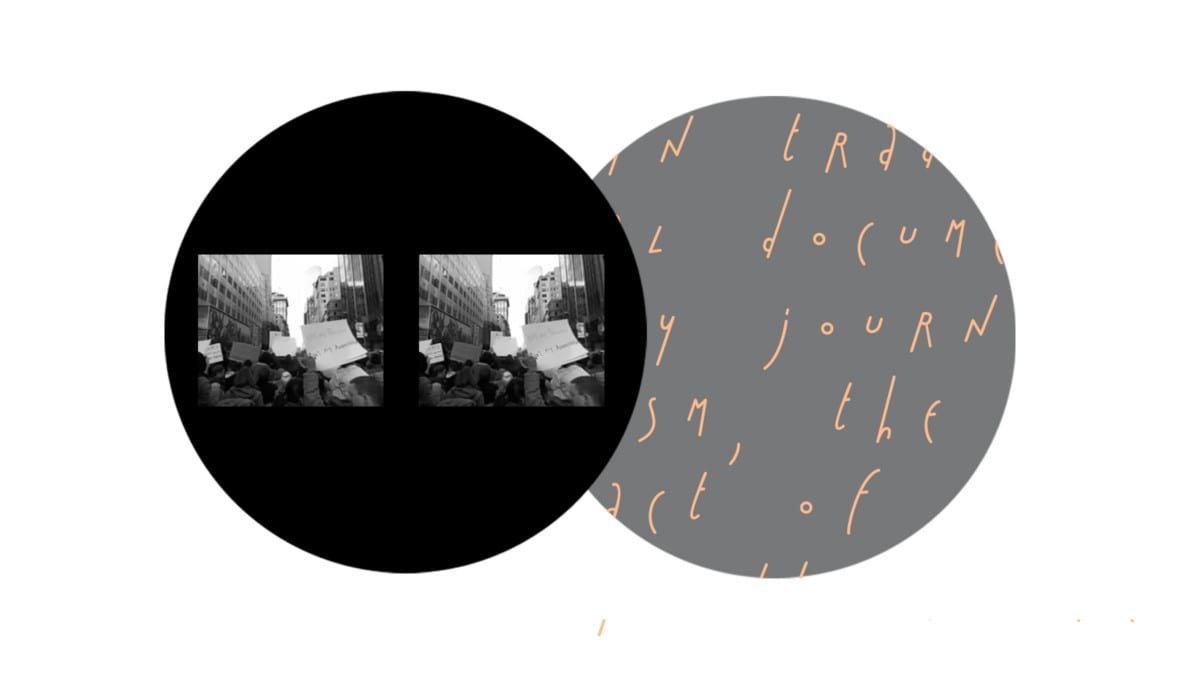In traditional documentary journalism, the very act of pointing the camera in a single direction is an act of editing, an act of censorship. A newscaster could film a protester climbing on top of a car; a provocative moment suggesting an angry mob unconcerned with property damage, while simultaneously, behind the camera, another protester is carefully folding in a car’s mirror so it doesn’t get broken off. Here are two very different stories happening within a few feet of each other but depending on your angle, you come away with a completely different conclusion. Although 360 footage isn’t immune from editing and manipulation, its omni-peripheral view allows multiple stories to be told simultaneously and gives the viewer the choice to look wherever draws her eye.
At last Friday’s protest at Washington Square park my friend saw a man with a sign that said, “Isn’t it a Little Late for This?” His implication was presumably twofold, “Why didn’t we protest before the election?” And, “What good will it do now?” After marching in two of these rallies last week I agree with him that it felt a bit ineffective to chant, “Not My President” or “We Reject The President Elect,” but it felt incredibly important and powerful to chant, “Black Lives Matter,” “No Hate, No Fear, Immigrants Are Welcome Here,” and “White Silence Equals Violence.” The purpose of these protests is to demonstrate to the world and those directly threatened by the incoming regime that plenty of Americans reject racism and bigotry. There is a lot of talk about the transportive power of VR and 360 video, but it’s usually in the context of tourism or education, not political activism. However, for those who live in small towns without massive protests, there is nothing quite like a 360 video to convey the energy of our dissent.
Here are some 360 clips from the last weekend’s protests in NYC. Watching them in a headset is especially powerful, if overwhelming. To watch in Google cardboard on your mobile device click the youtube icon in the corner of each video which will open your Youtube app, from there you can click the cardboard icon.
To further demonstrate the effectiveness of 360 journalism, I shot some footage of the “empathy wall” / “subway therapy” project in the Union Square subway station, where people have been writing notes of positivity (and, of course, screeds against Trump) for the past week and a half. Having viewed journalists’ photos and documentary video of the sticky notes wall, you could be forgiven for seeing it as an overgrown bulletin board created by a few disgruntled artists, but in person it is much more than that: the notes cover not one wall but many, notes hand from the ceiling, litter the floor, and even fluttering in the air. The energy is palpable and positive; unlike in the park above, people are eager to chat with those standing near them at the Post-it wall. Though it’s much more subdued than the street protests, the 360 video again proves its ability to represent a space more thoroughly—especially watching the faces of those who have come to post and view others posting. My hope is that we can watch this and other immersive documentation in coming years whenever we need a reminder of this gut-punch feeling.
Video by Alex Reeves, music by Eliot Krimsky.
